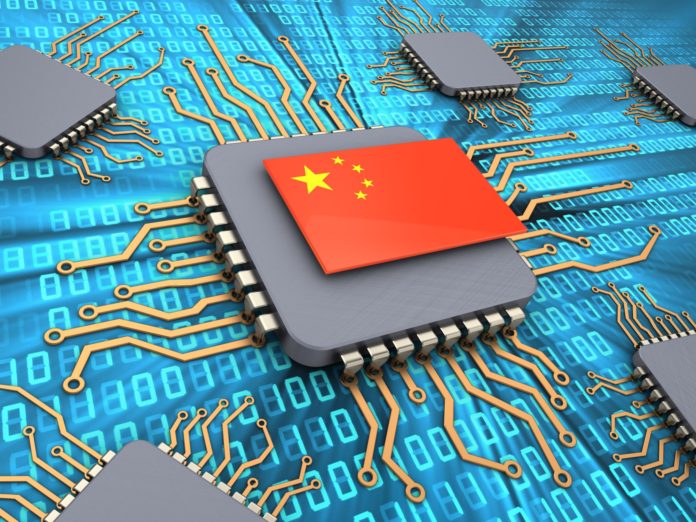US-China Tech War: The Rise of RISC-V Chip Technology
Introduction
As the US-China tech war continues to escalate, a new battleground has emerged in the form of RISC-V chip technology. This open-source technology, pronounced “risk five,” is gaining prominence in China and is seen as a potential threat to American companies. In this article, we will explore the background of RISC-V, the concerns raised by lawmakers, and the implications for the global technology industry.
The Rise of RISC-V
RISC-V is an open-source chip technology that competes with proprietary technology from British semiconductor and software design company Arm Holdings. It has the potential to be used in a wide range of applications, from smartphone chips to advanced processors for artificial intelligence. The technology originated from labs at the University of California, Berkeley and received funding from the Pentagon’s Defense Advanced Research Projects Agency (DARPA).
National Security Concerns
Lawmakers, both Republican and Democratic, have raised concerns about the use of RISC-V by American companies and its potential impact on national security. They argue that Beijing is taking advantage of the culture of open collaboration among American companies to advance its own semiconductor industry, which could weaken the US’s lead in the chip field and aid China’s military modernization.
Representative Mike Gallagher, chairman of the House select committee on China, has urged the Commerce Department to require American companies to obtain an export license before engaging with Chinese entities on RISC-V technology. Other lawmakers, including Senator Marco Rubio and Senator Mark Warner, have also called for action to address the perceived threat.
US-China Battle Over Chip Technology
The US-China tech war has escalated in recent years, with the US imposing export restrictions on Chinese companies in the chip industry. These restrictions have prompted China to develop its own chip technologies, including RISC-V. Both Huawei Technologies and US chip giant Qualcomm have embraced RISC-V, highlighting its potential for innovation and transformation in the tech industry.
However, the US government’s concerns about the transfer of technology to China have led to calls for stricter enforcement of export control regulations. Lawmakers argue that the existing export-control laws are not equipped to deal with the challenge of open-source software like RISC-V. They believe that a paradigm shift is needed to address the national security risks associated with the technology.
The Role of the Swiss-based Foundation
RISC-V is overseen by a Swiss-based nonprofit foundation that coordinates efforts among for-profit companies to develop the technology. This foundation plays a crucial role in promoting collaboration and innovation in the RISC-V ecosystem. However, if the US government were to regulate American companies’ participation in the foundation, it could create complications for the global technology industry and hinder China’s pursuit of chip self-sufficiency.
Potential Implications
The regulation of RISC-V technology could have far-reaching implications for the global technology industry. American companies may face restrictions on working with Chinese entities on RISC-V, which could disrupt collaborative efforts and hinder innovation. It could also impact China’s ambitions to develop its own chip industry and challenge the dominance of American chip designs.
Jack Kang, vice president of business development at SiFive, a startup using RISC-V, warns that potential restrictions on American companies regarding RISC-V would be a “tremendous tragedy.” He compares it to banning the use of the internet, emphasizing the importance of technology, leadership, innovation, and job creation.
The Need for Updated Export Control Policies
Lawmakers and experts believe that the US needs to update its export control policies to address the challenges posed by open-source software like RISC-V. They argue that the existing laws are not sufficient to protect national security and safeguard core technologies. The Bureau of Industry and Security, part of the Commerce Department, is constantly reviewing the technology landscape and threat environment to determine the best application of export control policies.
Representative Michael McCaul, chairman of the House Foreign Affairs Committee, calls for action from the Bureau of Industry and Security and threatens to pursue legislation if necessary. He emphasizes the need to prevent Communist China from using open-source chip architecture to bypass US sanctions and strengthen its chip industry.
The Future of RISC-V and the US-China Tech War
The US-China tech war continues to evolve, with RISC-V chip technology emerging as a new battleground. The concerns raised by lawmakers reflect the growing recognition of the strategic importance of chip technology and its impact on national security. The regulation of RISC-V could shape the future of the global technology industry and determine the balance of power between the US and China in the chip field.
As the Biden administration faces pressure to address the national security risks associated with RISC-V, it must carefully consider the implications of potential restrictions on American companies. Balancing the need for national security with the promotion of innovation and collaboration will be crucial in navigating the complexities of the US-China tech war.
Conclusion
The rise of RISC-V chip technology as a new battleground in the US-China tech war highlights the growing importance of open-source software and its impact on national security. Lawmakers are calling for stricter export control policies to address the perceived risks posed by RISC-V. The regulation of this technology could have significant implications for the global technology industry and the balance of power between the US and China. As the US-China tech war continues to unfold, the future of RISC-V remains uncertain, but its potential for innovation and transformation cannot be ignored.




